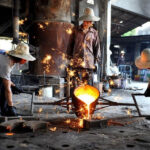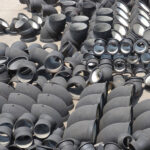The forging technology of magnesium alloy is roughly the same as that of aluminum alloy, but there are some obvious differences. Now, let’s talk about the alloy wiki briefly!
The surface friction coefficient of magnesium alloy at high temperature is large, the fluidity is poor, the adhesion force is large, and it is difficult to fill deep vertical blind holes. Therefore, the internal and external fillet radii and rib thickness of magnesium alloy forgings are larger than those of aluminum alloy.
Magnesium alloy forging billets are extruded in most occasions, and they are generally homogenized before extrusion to reduce the anisotropy of mechanical properties.
During forging, not only the billet should be preheated, but the forging die should also be heated to a certain temperature, otherwise the high temperature forging billet and the cold die may cause cracks due to rapid cooling.
Magnesium alloys are extremely sensitive to the deformation rate, and the plasticity is significantly reduced when the deformation rate is increased. Therefore, more complex forgings need to be formed through multiple (fire) processes. At the same time, the temperature of the forging blank should be lower than once to prevent the grains from growing. Decrease 15°C-20°C.
The above is the information collected by alloy wiki for everyone. If you need magnesium alloy procurement and understand magnesium alloy companies, you can log in to alloy wiki here to have what you want.
Link to this article:The Features of magnesium alloy forging
Reprint Statement: If there are no special instructions, all articles on this site are original. Please indicate the source for reprinting:Alloy Wiki,thanks!^^



